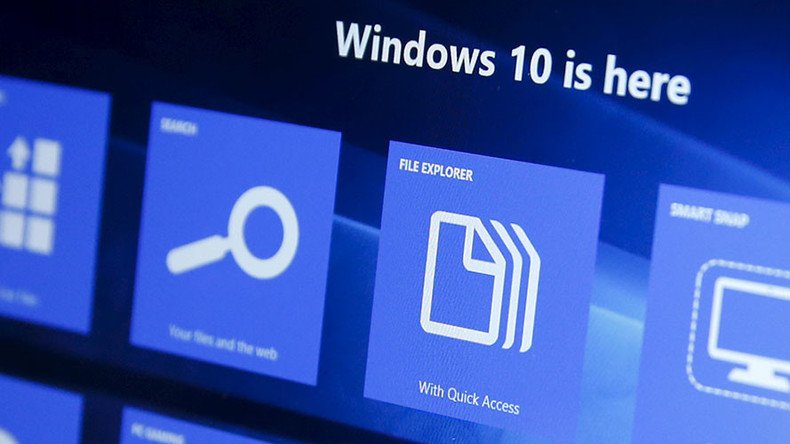Microsoft sued for Windows 10 update that allegedly damaged devices

Three people have filed a class action lawsuit in Illinois for $5 million, claiming that Microsoft's Windows 10 update ruined devices or caused them to lose data in what they called the company's "failure to exercise reasonable care."
The plaintiffs said in the new lawsuit that upgrading to the Windows 10 operating system damaged their hard drives or caused a loss of data, requiring them to pay for repairs or a replacement computer.
They said Microsoft's Windows 10 was aggressively marketed to Windows users; the company even offered a free upgrade for year following its release.
While the Windows 10 installer would check “the consumer’s computer for compatibility; it does not, however, check the condition of the PC and whether or not the hard drive can withstand the stress of the Windows 10 installation,” the complaint states.
Washington judge rules in favor of Microsoft, against govt gag order https://t.co/DOqruwtILEpic.twitter.com/1h0BTtro8L
— RT America (@RT_America) February 10, 2017
There were cases when Windows 10 was installed without user approval, the lawsuit states. In addition, users said it was impossible to reverse installation once it had occurred.
Microsoft "failed to exercise reasonable care in designing, formulating, and manufacturing the Windows 10 upgrade," according the plaintiffs.
"As a result of its failure to exercise reasonable care, defendant distributed an operating system that was liable to cause loss of data or damage to hardware," they added, going on to say that without a warning or instruction, "a reasonable customer would not be aware of the problem."
The plaintiffs said they have more than 100 class members for the suit. Only those who updated from Windows 7 to Windows 10 and experienced the relevant problems within 30 days of the upgrade can be included in the suit, according to Digital Trends. The lawsuit claims are based on breach of warranty, product liability, negligence and consumer fraud.
Unapproved Windows 10 installation required lead plaintiff Stephanie Watson to purchase a new computer after her hard drive failed, she said in the suit. Plaintiff Robert Saiger said applications on his computer stopped functioning after installation. Howard Goldberg, another plaintiff, said he installed Windows 10 after months of daily popup ads imploring him to do so. Later, he had to pay Microsoft to fix his computer stemming from damage he claims occurred during Windows 10 installation.
“After three attempts to download Windows 10, each of which tied up his computer for extended periods of time, Goldberg’s computer was damaged, and Windows 10 was not actually downloaded and functional,” the lawsuit says.
Upgrading to Windows 10 was a choice, a Microsoft spokesperson said in response to the lawsuit. The plaintiffs’ claims are without merit, the spokesperson added.
“The Windows 10 free upgrade program was a choice designed to help people take advantage of the most secure, and most productive Windows,” the spokesperson said, according to Courthouse News. “Customers had the option not to upgrade to Windows 10. If a customer who upgraded during the one year program needed help with the upgrade experience, we had numerous options including free customer support and 31-days to roll back to their old operating system. We believe the plaintiffs’ claims are without merit.”













